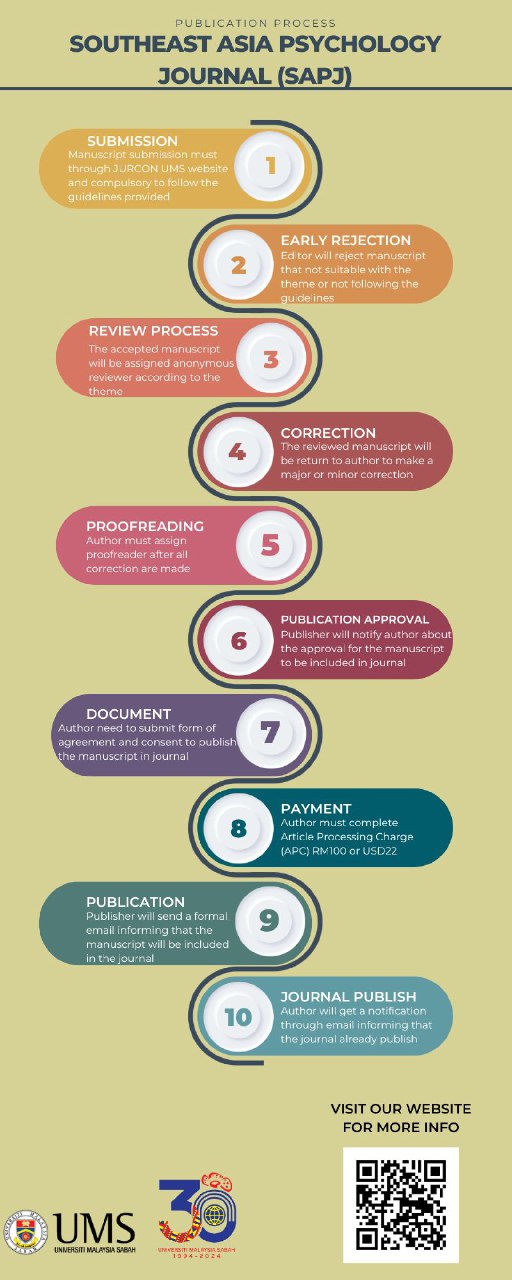THE GLOBAL PREVALENCE AND DIAGNOSIS OF AUTISM SPECTRUM DISORDER (ASD) AMONG YOUNG CHILDREN
DOI:
https://doi.org/10.51200/sapj.v7i1.5163Keywords:
Global Prevalence, Diagnosis & Autism Spectrum DisorderAbstract
Autism Spectrum Disorder (ASD) refers to a group of developmental disorders. Although the global prevalence of ASD is reported to be between 3-6 children per 1000, there is difficulty in comparing the prevalence of ASD across countries because of the variation in methodology, age group of population and the sample size studied. The prevalence of ASD shows an increasing trend and factors attributing to the rise in prevalence include the increase in awareness on the signs and symptoms of ASD, the increase in access to services, the changes in the definition of autism over time and the broadening of the diagnostic criteria. Among the administrative factors also linked to the increase in prevalence were changed in reporting practices and availability of records. Before1990’s diagnosis of ASD was more often after the entrance to the school. Currently, there are diagnostic tools available and the diagnosis can be made among toddlers. However, for those on the milder end of the spectrum with average or above-average language and cognitive abilities, the diagnosis is still made after school entry. Early detection, diagnosis, and intervention are important in promoting better long-term outcomes and as such screening programs need to be in place. Sustainability of the program requires training of primary care providers, the use of specially designed tools for screening and protocols for referral, and a multidisciplinary diagnostic team. This paper shares the Malaysian experience in implementing a screening program since 2011 and the outcomes of the screening program for ASD in primary care.
References
Clark, M. L., Vinen, Z., Barbaro, J., & Dissanayake, C. (2018). School Age Outcomes of Children Diagnosed Early and Later with Autism Spectrum Disorder. Journal of Autism and Developmental Disorders, 48 (1), 92-102.
Diagnostic and Statistical Manual of Mental Disorders: Fifth Edition. (2013). Washington DC: American Psychiatric Publishing.
Dudley, C., & Zwicker, J. D. (2016). Laying the Foundation for Policy: Measuring Local Prevalence for Autism Spectrum Disorder. The School of Public Policy Publications, 9, 1-4.
Elsabbagh, M., Divan, G., Koh, Y. J., Kim, Y. S., Kauchali, S., Marcín, C., et al. (2012). Global Prevalence of Autism and Other Pervasive Developmental Disorders. Autism Research, 5 (3), 160-179.
Filipek, P., Accardo, P., Ashwal, S., Baranek, G., Cook, E., Dawson, G., et al. (2000). Practice parameter: Screening and diagnosis of autism. American Academy of Neurology, 468-479.
Glascoe, F. (1999). The value of parents’ concerns to detect and address developmental and behavioural problems. Journal of Paediatrics and Child Health, 35, 1-8.
Hansen, S. N., Schendel, D. E., & Parner, E. T. (2015). Explaining the Increase in the Prevalence of Autism Spectrum Disorders The Proportion Attributable to Changes in Reporting Practices. JAMA Pediatrics, 169 (1), 56-62.
Holzer, L., Mihailescu, R., Rodrigues-Degaeff, C., Junier, L., Muller-Nix, C., Halfon, O., et al. (2006). Community Introduction of Practice Parameters for Autistic Spectrum Disorders: Advancing Early Recognition. Journal of Autism and Developmental Disorders, 36 (2), 49–262.
Idring, S., Lundberg, M., Sturm, H., Dalman, C., Gumpert, C., Rai, D., et al. (2015). Changes in Prevalence of Autism Spectrum Disorders in 2001–2011: Findings from the Stockholm Youth Cohort. Journal of Autism and Developmental Disorder, 45 (6), 1766-1773.
Infosihat. (2003). Retrieved 15 January, 2018, from Media: http://www.infosihat.gov.my/infosihat/media/Poster/A/52_autism.php








